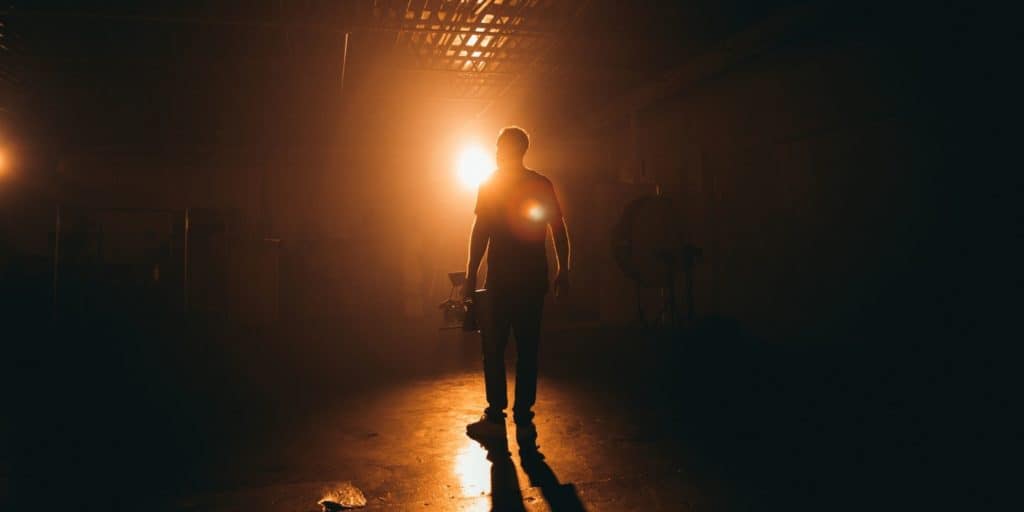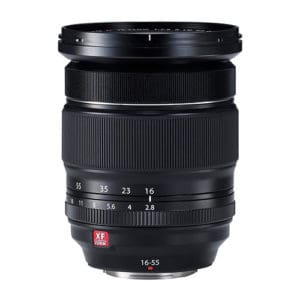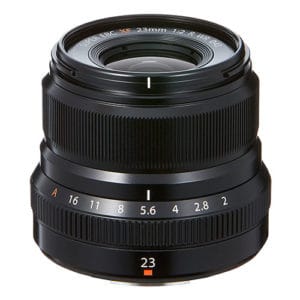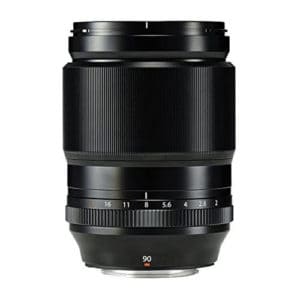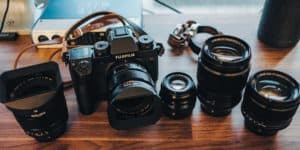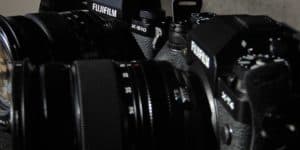The number of lenses available for Fuji X-mount cameras has expanded rapidly over the last few years.
To the point that Fujifilm shooters now have an almost confusing range of glass to choose from.
However, while many Fuji X-mount lenses perform brilliantly in terms of optics and performance, you may find that the list of high quality lenses becomes much shorter the moment you narrow the search down to only those specifically suited to video.
So which Fuji X-mount lenses are best for videography?
And how should you go about choosing the right ones for your own video work?
This guide will set you straight.
One lens to do it all?
When it comes to shooting video with the Fuji X-mount system, if you have to choose just one piece of glass to work with, it should probably be this one.
Offering smooth and silent autofocus, sharp image quality, and a fast maximum aperture, Fuji’s XF 16-55mm f/2.8 is a solid all-round zoom lens that excels at video.

The 16-55mm f/2.8 offers stunning color rendition and very pretty out of focus rendering; making it particularly well-suited to film making situations where aesthetics are a priority.
And unlike many zoom lenses, center image quality is very sharp – even when shooting wide open – with only the corners displaying noticeable softness.
Autofocus works brilliantly; not only is performance fast, but essentially also silent.
So whether you prefer to use an external mic or rely upon your camera’s built-in audio recording capabilities, AF motor noise will not be an issue.
True, if you don’t have your camera set up right, transitions can sometimes be a little jerky.
So, for smoother AF focus pulls, be sure to experiment with different focus speed and sensitivity settings.
As it is manufactured from premium metal and plastic, this is neither the smallest nor the most lightweight of lenses.
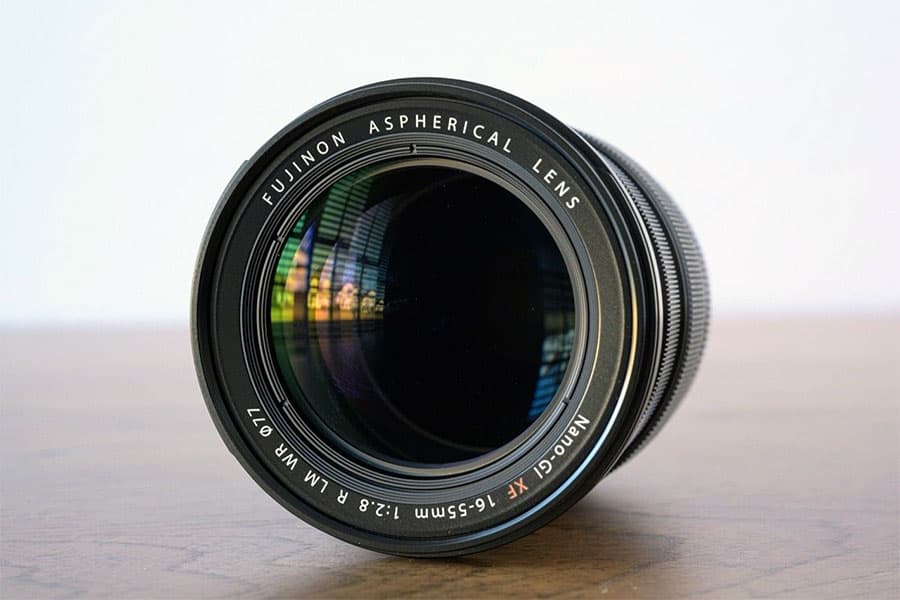
It is, however, one that is a real pleasure to work with.
Sure, focus by wire never gives the most satisfying of results when compared to true manual focusing. But let’s just say that the 16-55mm f/2.8 makes a very good job of a bad situation, coming as it does with a nicely tactile and responsive focus ring.
For owners of Fuji cameras featuring onboard image stabilization there’s really nothing about the 16-55mm f/2.8 to leave you too dissatisfied.
For users of other Fuji models, though – especially those who shoot a lot of handheld footage – lack of image stabilization may very well be a genuine deterrent to purchasing this lens.
All in all, though, the Fuji 16-55mm f/2.8 is simply a very dependable and hardworking lens that will deliver great looking video in most shooting situations.
Not only does it top of our list of the best video lenses for Fuji X-mount cameras, but it is simply one of the best lenses available for Fuji overall. Hence why it also made our recent guide to the best lenses for the Fuji X-T4.
Highly recommended!
Fuji videographers in need of a wide angle prime that they can depend on would do well to check out the Fujinon 16mm f/1.4 R WR.
Featuring enviable optics, a beautifully fast maximum aperture, and solid AF performance, this is a lens that is well suited to a wide range of filmmaking scenarios.
Providing the equivalent coverage of a 24mm lens on full frame, the 16mm f/1.4 is ideal for either wide vista shots or when shooting in tight interior spaces.
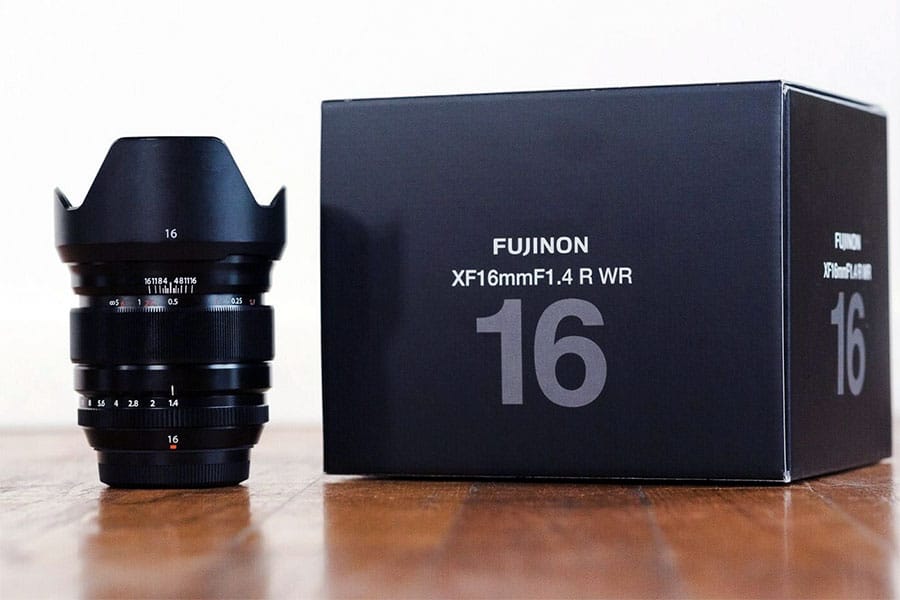
It would also perform well when filming action sports, where the wide angle combined with an up close point of view would result in some pretty dynamic and exciting footage.
Although there are lenses out there offering faster autofocus than the 16mm f/1.4, this is not going to be a major concern for anyone using it primarily for videography. Indeed, here smooth action, accuracy, and silence are generally more highly valued than speed.
Needless to say, the 16mm f/1.4 excels on all three of these criteria.
Nonetheless, for the best results, be sure to experiment with your AF settings.
As a starting point, try setting sensitivity to maximum and AF speed to minimum, and adjust as needed from there.
Those who prefer to set focus manually will no doubt be pleased to learn that MF action is also surprisingly good for a lens of the “by wire” variety.
What’s more, the chunky MF ring offers genuine hard stops and the ability to toggle between AF and MF control simply by snapping it back and forth.

Image sharpness is excellent in the center even when shooting at f/1.4, with just some slight softness in the corners.
In any case, this latter issue clears up once you close down the diaphragm a stop or two.
Beyond this, there are no major optical flaws.
All in all, then, there’s little not to like about this lens – other than the price.
First things first, this is not a lens made for X-mount, I included it here because for the price, it’s a really good alternative to native fuji lenses for videography.
You will need this adapter to make it work with your Fuji camera.
Offering a focal length equivalent to 27-53mm on full frame, Sigma’s 18-35mm f/1.8 Art lens is clearly not the most versatile zoom in existence.
But what it lacks in focal range it more than makes up for in quality.
And realistically, videographers who truly know their craft will rarely need anything more than a standard lens and a moderate wide angle; and for that the 18-35mm f/1.8 more than has you covered.
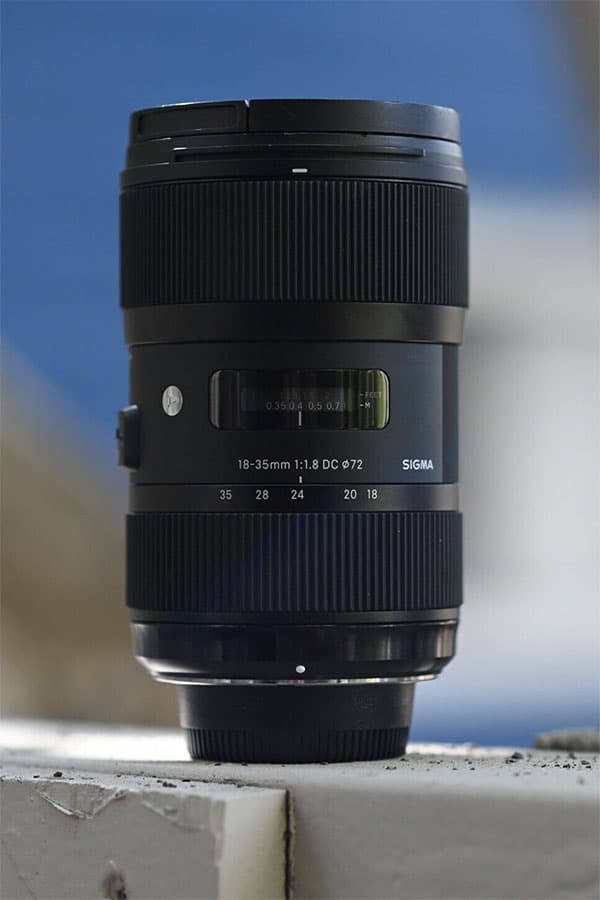
Interestingly, Sigma was once known as being a budget alternative to brands like Nikon and Canon. This was at a time when all the major Japanese manufacturers still produced everything in Japan.
Of course, the world being what it is today, most big-name Japanese brands now outsource a lot of manufacturing to factories in cheaper SE Asian countries where quality control is not always up to the same standards.
Not Sigma. Indeed, as the brand still produces in Japan – a nation long known for the exceptional quality of its manufacturing – it might be argued that today Sigma is the premium brand and all the others are merely budget versions.
Such a theory is certainly supported by this lens.
For a start, image quality is superb; at 18mm you can expect to see exceptional center sharpness with only a negligible drop-off in resolution towards the edges; at 35mm the picture is only marginally different, with central sharpness still excellent and corner sharpness just a tad less impressive.
Meanwhile, chromatic aberrations are so subtle as to be barely present and flare is kept well under control.
And what about that constant maximum aperture of f/1.8?
Impressive, to say the least! Not only does this let more light in, but now ultra narrow depth of field effects suddenly come within reach of APS-C users too.
And thankfully bokeh is very pretty, thanks to nine rounded aperture blades.
A metal lens mount and an overall metal and composite construction make for a reassuringly sturdy product. An impression that’s further reinforced by the nicely grippy rubber-coated barrel.
Of course, all this only serves to make the lens rather big and heavy.
But that seems like a small price to pay for such a robust bit of gear.
The lens features a snappy and near-silent ultrasonic focus motor.
Although be aware that in quieter recording situations some slight motor-noise might be picked up by your camera’s internal mic (but this isn’t a given either; it really is very quiet!).
Also, both focus action and zooming are internal, meaning that the front element doesn’t extend when carrying out either task.
So, that’s the good news.
Here’s the bad: although the Sigma 18-35mm Art lens is available for several camera systems, sadly Fuji isn’t currently one of them.
All is not lost, though, as thankfully the addition of a Fringer EF-FX PROII lens adapter will make the Sigma compatible with most Fuji X-mount cameras.
True, the adapter adds considerable extra expense to the purchase price of the lens.
But firstly this is a genuinely great lens. And secondly, it’s one that retails for a lot less than most of Fuji’s native offerings.
The total price, then, is essentially the same as if you were to purchase a Fuji lens.
Only this way you get one that is better suited to video (just try not to dwell on the fact that Canon and Nikon users get to use the same amazing lens for about 30% less than you do).
Looking for an even wider point of view than is offered by the Fujinon 16mm f/1.4 (above)?
The Rokinon/Samyang 12mm f/2 is an extremely durable and incredibly compact wide angle prime lens, which on a camera with an APS-C sensor provides an angle of view equivalent to 18mm.
The Rokinon/Samyang 12mm f/2 is available for the Fuji X-mount system and is particular well suited to being used as a videography lens.
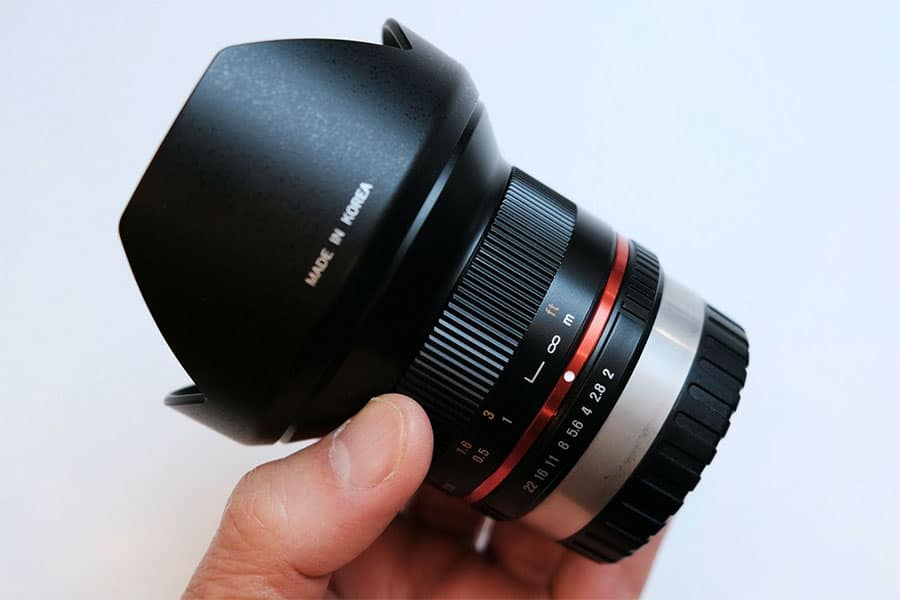
But let’s start by getting the most divisive feature of this lens out of the way first; it is manual focus only.
That’s right, no autofocus of any kind. Just like in ye olde days.
Those looking for easy “run and gun” optics for shooting vacation videos or vlogs can skip on down to the next lens on our list; the Rokinon/Samyang 12mm f/2 just isn’t for you.
But for filmmakers of a more dedicated and patient variety – those who prefer to take full control over every element of their video productions – this may be just the bit of glass you’ve been waiting for.
How so?
Well, for a start, focus throw is good and long; making focus-pull effects and other subtle transitions a pleasure to shoot.
Precision focusing, too, is a breeze. If this is the way you like to work – slowly and deliberately – you will not be disappointed by this lens.
It’s not just focus that is manual though; aperture is also controlled mechanically via a physical ring on the lens itself.
Indeed, no amount of spinning your camera’s command dials will make any difference to lens aperture; your camera doesn’t know what aperture you are using, so you’ll need to set it by hand.
If you can live with that (and really, it’s not such a big deal), then you’ll be rewarded with a lens that delivers optically excellent performance at a very attractive price point. Not only are images produced with the Samyang/Rokinon beautifully sharp, even when shot wide-open, but the lens also suffers from very little in the way of optical defects or anomalies.
For example, flare is well controlled. And while there is evident color fringing towards the edges of the frame, this is easily fixed in post.
Also, it should be noted that there is some quite obvious vignetting at the corners.
But no more than we might expect from a lens of this focal length.
Finally, while you’ll struggle to achieve a sufficiently shallow depth of field to ever really notice the bokeh produced by this lens, rest assured that – on the rare occasions that it does occur – out of focus rendering is perfectly attractive.
To summarize, then, the Rokinon/Samyang 12mm f/2 produces excellent imagery, comes with a fast maximum aperture, offers true manual focus control, and doesn’t cost the earth.
For many Fuji shooters in need of an ultrawide angle lens for video work this will be a winning combination.
Offering an angle of view equivalent to a 35mm lens on a full-frame camera, the Fujinon 23mm f/2 iR WR is a sharp and fast prime lens that comes at a bargain price.
As with most Fujinon lenses, the XF 23mm f/2 is well built, from barrel to mounting plate, in metal alloy.
Indeed, the only plastic element you’ll find on this lens is the lens cap.
This makes it a sturdy and dependable little tool to have in your bag for all your daily videography needs.
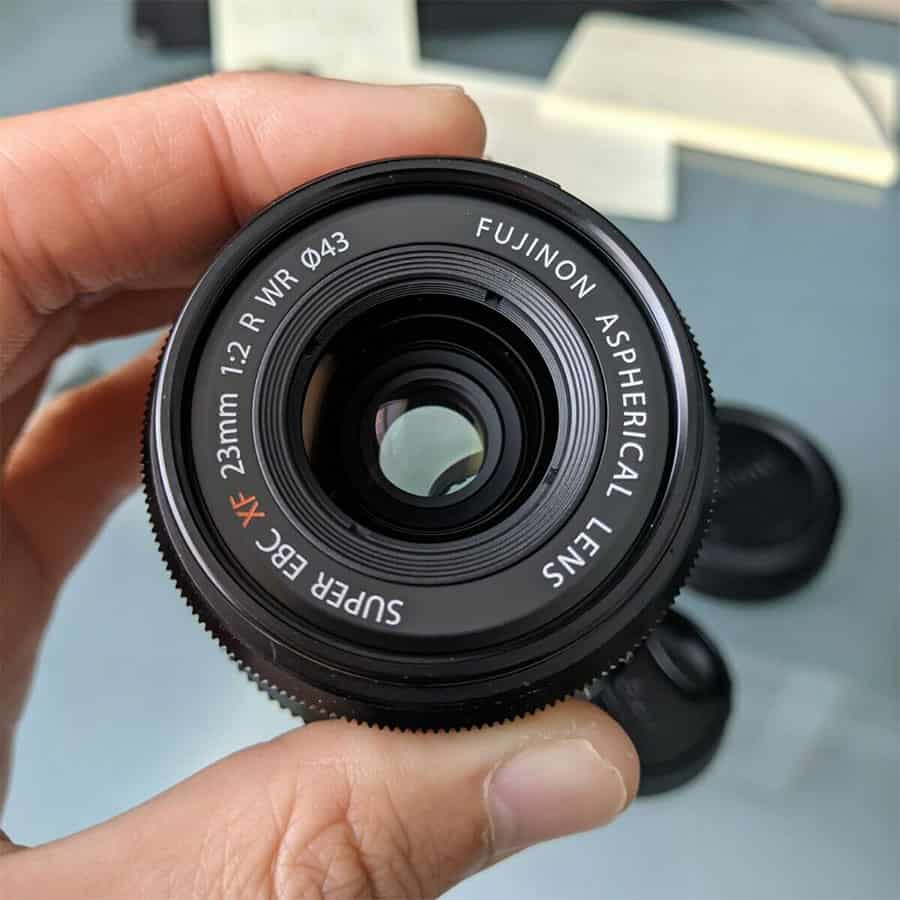
Autofocus is lightening fast, highly accurate, and near-silent; at most you might detect a slight hum if using your camera’s onboard mic to record audio.
Even in low lighting conditions, autofocus is snappy and displays no hunting.
Meanwhile, despite employing the focus by wire system, the manual focus ring turns smoothly and silently, with just the right degree of resistance – making it well suited to video work.
There is also a physical aperture ring, offering clickable increments from f/2 through to f/16.
A further twist of the ring takes you to A; auto exposure mode.
While image sharpness is excellent at moderate apertures, and even pretty good wide open when shooting subjects at a middle distance, be aware that it is less impressive when shooting close-up at f/2. Which is a bit of a shame because the fast maximum aperture and nine rounded aperture blades can make for some quite lovely bokeh.
Aside from this, there is a degree of pincushion distortion, but little or nothing in the way of either ghosting or flare.
Although the 23mm f/2 is not stabilized, it is well weighted for use with Fuji X-mount cameras.
So as long as you have a steady hand, camera shake shouldn’t be too much of a problem. Finally, this lens is priced a lot more competitively than some of Fuji’s other offerings, making it an appealing proposition for videographers on a relatively tight budget.
Offering a field of view comparable to 137mm on a full frame camera, the Fujifilm 90mm f/2 R LM WR is an excellent mid-length telephoto lens that is very well suited to video work.
Indeed, as it combines a fast maximum aperture with tack sharp optics and and impressive autofocus, there’s really very little about the 90mm f/2 that will leave Fuji-centric videographers wanting.
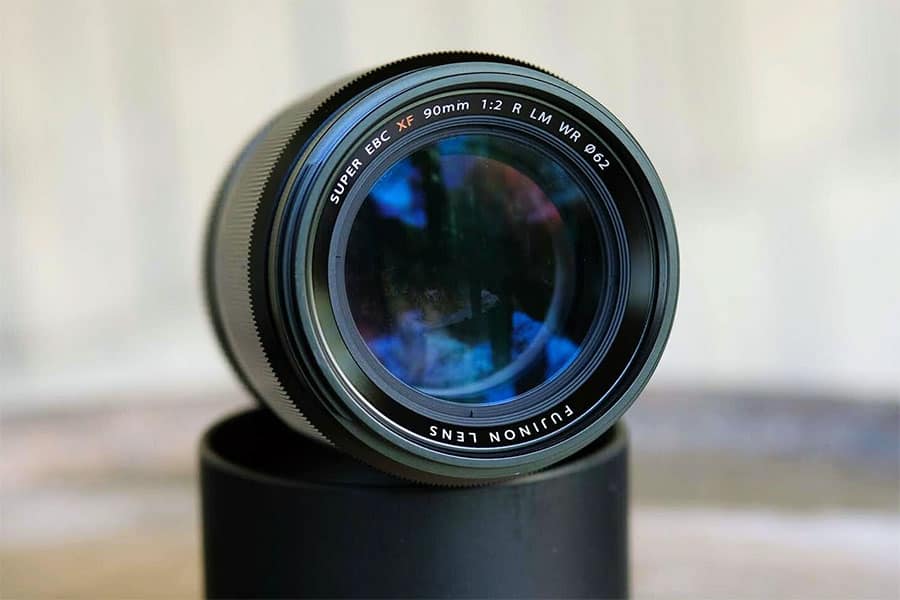
The lens boasts near-perfect optics.
Color, detail, and sharpness are exemplary. And an aperture of f/2 on a lens of this focal length makes for some very nicely blurred backgrounds.
AF tracking works exceedingly well when following a moving subject, and there’s virtually no lens motor noise.
True, this is yet another Fujinon focus by wire lens – which never come close to true manual focus in terms of precision and control – yet the MF action is good enough here that it shouldn’t hold you back.
Solid build quality and weather sealing add to the lens’s credentials. However, depending upon which Fuji camera you own, you may find the lack of image stabilization a bit of a dealbreaker.
Over all, though, this is a very high quality lens. And for filmmakers seeking something in this approximate focal length, there really isn’t anything better out there for the Fuji X-mount right now.
The Fuji Videographer's Guide
Maximum Aperture
A fast maximum aperture will allow shooting in lower light situations while simultaneously producing a shallower depth of field; often highly prized in videography for creating a truly cinematic look.
Put like this, it’s clear that you will probably want to seek out a lens with a nice fast maximum aperture.
The catch? The wider the diaphragm opens on a lens, the more expensive it will tend to be.
In reality, then, when choosing a video lens for your Fuji X-mount camera, there will always need to be a degree of negotiation between maximum aperture, on the one hand, and your budget on the other.
Bokeh

Bokeh refers to the quality of out of focus areas of a photo or movie. Bokeh is not so much about the degree to which background areas are out of focus, but what these out of focus areas look like.
Bokeh is the result of a variety of factors, but nearly all of them involve your lens. A lens that renders out of focus areas in a soft and smooth manner will usually be more highly prized than one that makes backgrounds look busy and distracting.
Why is that important to you as a videographer?
Well, as mentioned above, to get a truly cinematic look to your video footage, you’ll want to shoot at a wide aperture; thus throwing the background out of focus.
Now the quality of bokeh produced by your lens will become very apparent.
Hopefully your footage will be interesting enough in itself that people are too busy clinging to the edge of their seats to be paying any attention to what’s happening in the background. But if the quality of bokeh produced by a lens is particularly poor – i.e. busy or in some other way unattractive – it might risk becoming a genuine distraction from the main action.
Smooth bokeh, on the other hand, tends to mean that the background will largely go unnoticed.
And in filmmaking that’s exactly how it should be.
Sharpness
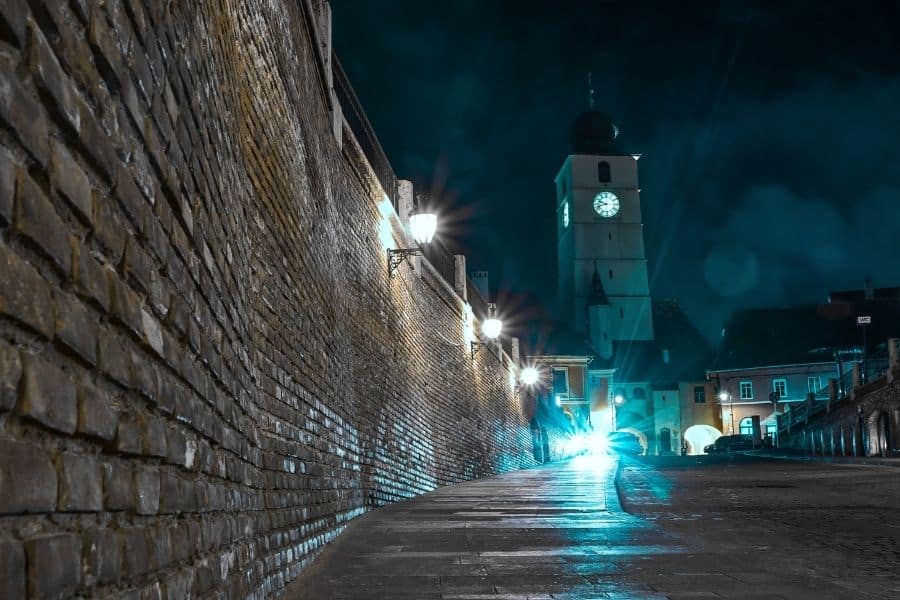
Faced with a choice between a sharp lens and one that produces soft footage, clearly nobody in their right mind would choose the soft one.
With that said, though, it’s important to be aware that most modern lens are very sharp, and so discussions of the relative merits of one lens over another are largely ones of degree.
In short, no modern lens truly delivers appallingly in terms of image sharpness.
It’s also important to remember that when a lens is a little soft, the problem tends to be most noticeable at the edges rather than in the center of the image.
And most of the time your subject will be in the center – making this a bit of a non-issue.
True, softness will usually be most apparent when shooting at the widest apertures; something you’re likely to spend a lot of time doing as a film maker.
But just keep in mind that a wide aperture means a narrow depth of field, and so edge details are likely to be out of focus anyway due to the narrow aperture.
This will largely render edge softness irrelevant.
Zooms vs Primes
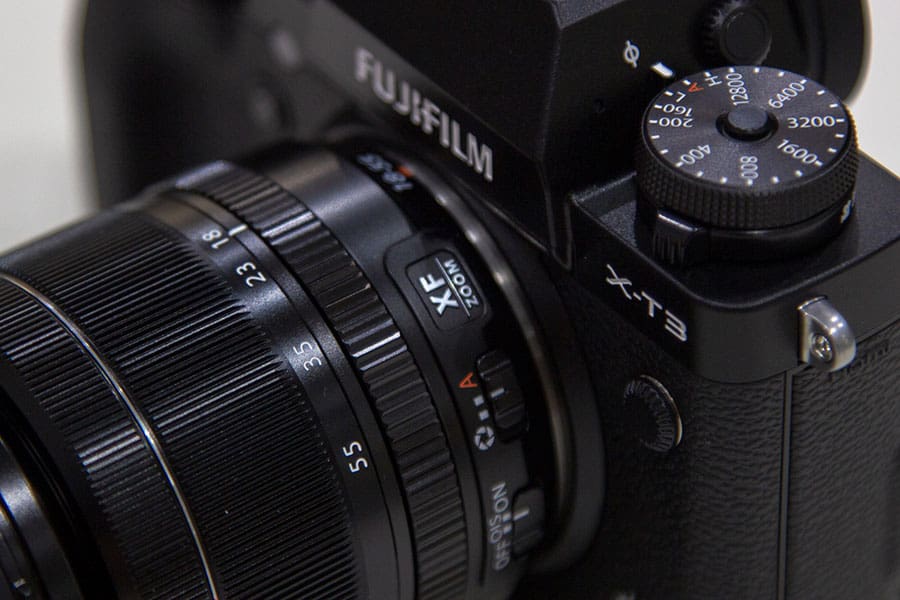
Zooms are handy. You effectively get several lenses in one, but don’t have to mess about changing them mid-shoot.
The problem with zooms, though, is that in order to fit several lenses into one, certain compromises have to be made.
The main compromises usually being in terms of image sharpness, maximum aperture, and price.
I.e. you might find a sharp zoom, but it’ll probably cost a lot and won’t have a very fast maximum aperture.
Or if it’s cheap and has a fast maximum aperture then it might not be very sharp. And so on.
Primes, on the other hand, tend to be very sharp, relatively affordable, and offer excellent light-gathering abilities in the form of a fast maximum aperture.
But you’ll need to purchase and carry several of them in order to cover the same range of focal lengths as the average zoom.
Either option is valid. The choice is entirely yours.
Focusing for Video Work
Choosing a lens that focuses accurately will always be an important consideration, but it becomes of even greater importance when considering which lens to use for videography.
Autofocus
Although AF speed is highly prized by most stills photographers – particularly those who regularly shoot fast moving subjects, such as sports or documentary photographers – it is usually not the number one consideration for videographers.
More important is focus accuracy, and the ability of AF motors to consistently track action (fast or otherwise) without hunting.
In part this of course comes down to the lens itself.
But if you don’t immediately get the results you expected from a given Fuji lens, it is important to be aware that performance can often be massively improved (or otherwise) depending on the AF speed and tracking sensitivity settings in your camera.
Also keep in mid that you will get the best AF results when recording video internally – i.e. direct to the camera – rather than externally.
Beyond autofocus performance, though, is also the matter of AF motor noise.
To be sure, if you are serious about videography you will quickly learn that using a camera’s built-in microphone is not the best way to record audio.
At the very least you will want to invest in a camera-mounting shotgun mic. Until that time though, keep in mind that some AF systems are quieter than others.
And a noisy AF motor can easily show up on the audio track if recording via the internal mics.
Manual Focus Lenses
While autofocus can be a powerful tool for videography, many film makers will opt to focus manually in certain situations; perhaps even in all situations, depending on their personal shooting style.
Whereas with autofocus the advantage is precisely that the camera does most of the work for you, the downside of this is you have little control over exactly how focus is achieved, and when.
The advantage of manual focus, then, is one of greater control. Indeed, many creative focussing effects that are core techniques of visual storytelling cannot be easily achieved by means of autofocus.
The frustrating thing, as a Fuji camera owner, is that native Fujinon lenses do not come with genuine manual focus. Instead they employ a system known as “focus by wire.”
True manual focus means that by turning the focus ring, you directly apply pressure to the lens’s mechanical parts, which move in accordance with your own movements. Move fast and the elements move fast, move slow and they move slow.
With a focus by wire lens, however, turning the “manual” focus ring sends an electronic signal to the lens’s focus motors, and they move the lens elements for you.
This means that there is no genuine connection between your input and the behavior of the lens. And although this provides some of the feel and control of manual focus, it is essentially an electronic simulation of manual focusing.
Consequently it does not provide the same degree of tactile control as is offered by genuine mechanical focusing.
Thankfully, though, a number of third party lens manufacturers produce lenses for the Fuji X-mount system that come with genuine manual focusing abilities.
Image Stabilization

No matter what kind of images you plan on shooting, optical image stabilization is a very handy feature to have in a lens. But it’s particularly handy in a lens for video. Especially if you plan on shooting handheld.
Sadly, very few lenses for the Fuji X-mount system come with optical image stabilization.
If you’re the owner of one of the few Fujifilm cameras that comes with built-in image stabilization – such as the Fuji X-T4 for example – this is not an issue you need worry about.
For everyone else, though, purchasing a lens that comes with its own image stabilization might well be a wise investment. Assuming you can actually find one that fits your camera.
Final Thoughts
As we’ve seen, when choosing a lens for videography you’ll need to take into consideration many important elements beyond simply those that concern the average stills photographer or casual shooter.
Hopefully, though, by working your way through my guide to the best video lenses For Fuji X-mount cameras, you now have a clear idea of exactly which features will be most important when choosing a lens or your own video work.
Are you a Fuji videographer?
What would your personal lens recommendations be for anyone wanting to use their Fujifilm cameras for video?
I’d love to hear about your experiences in the comments section below!

